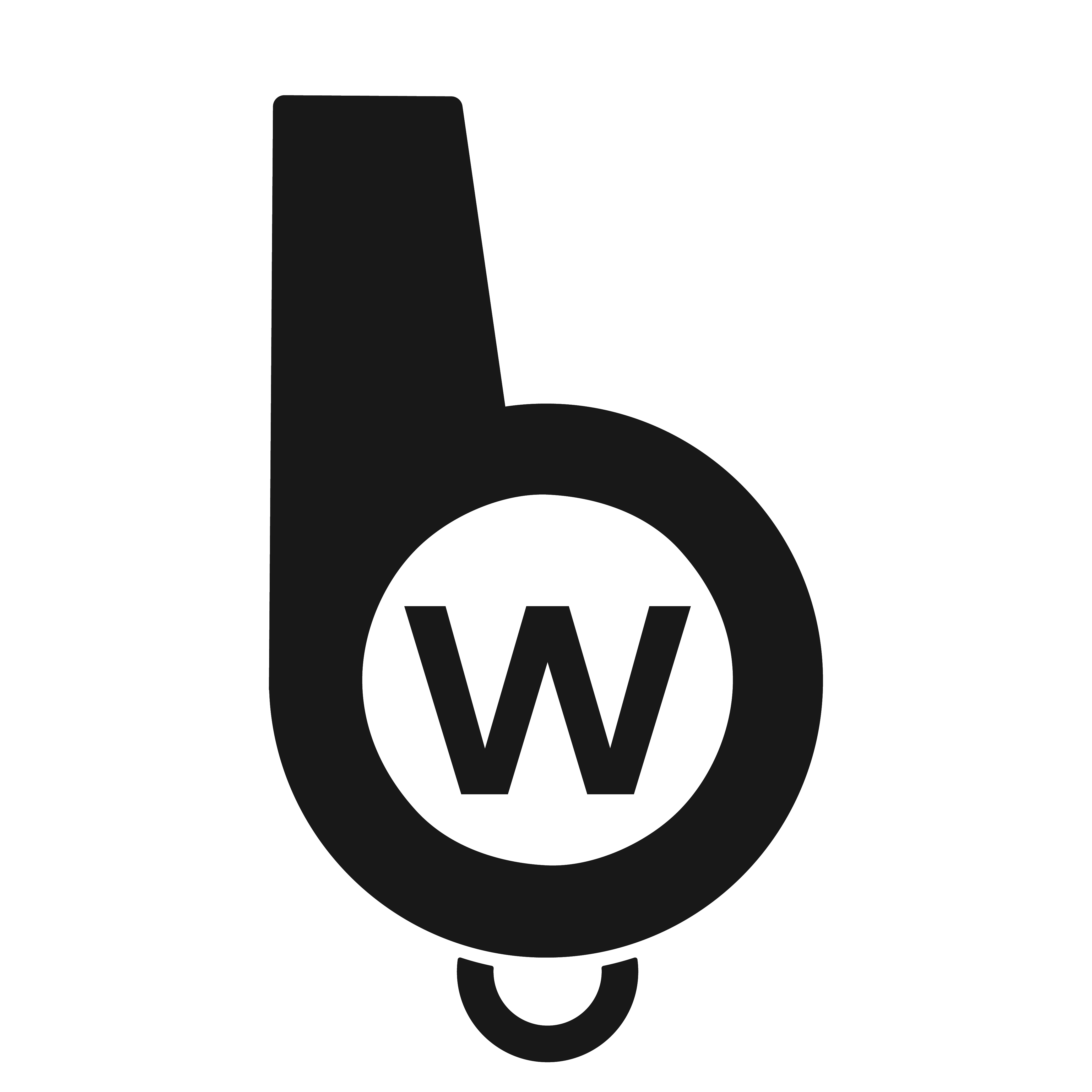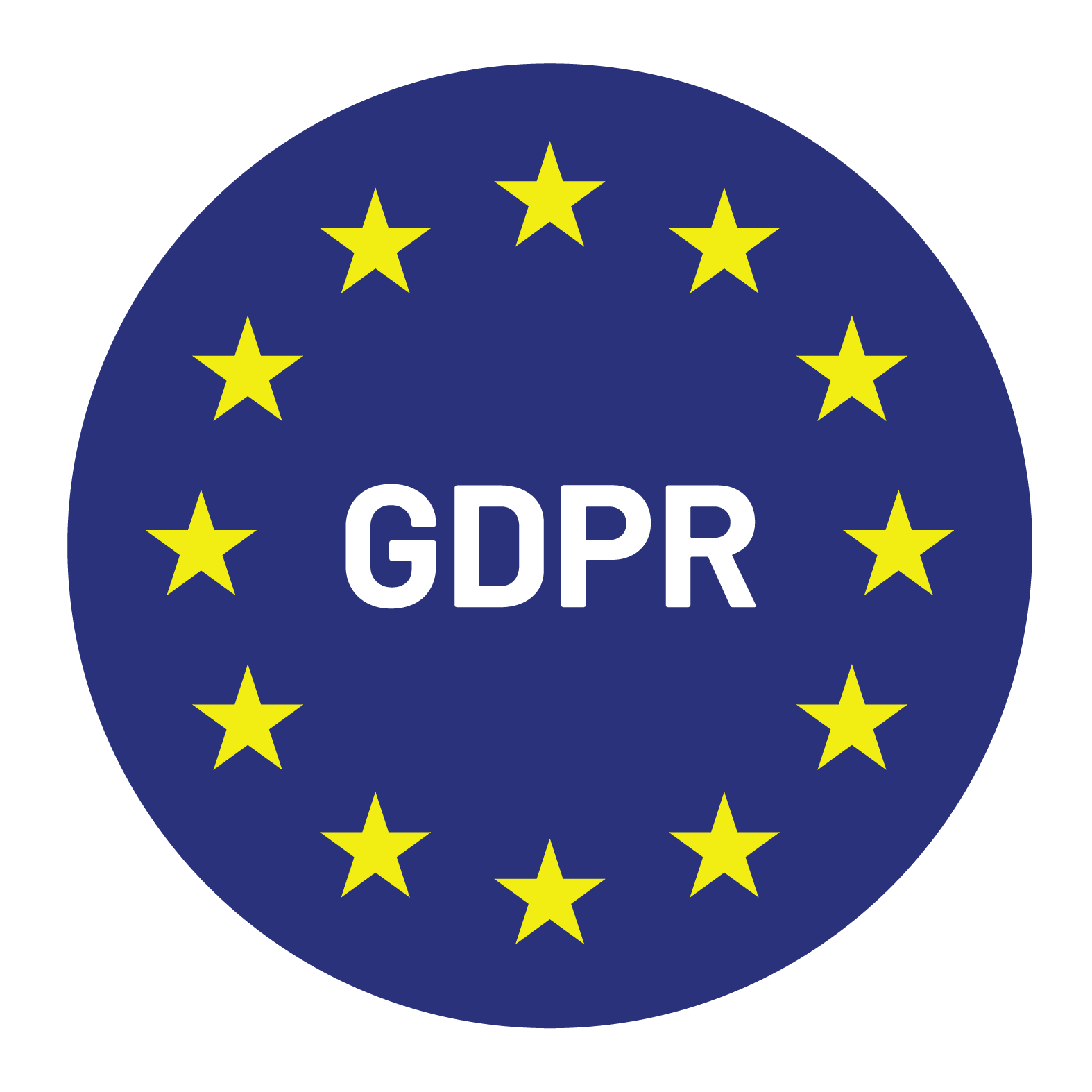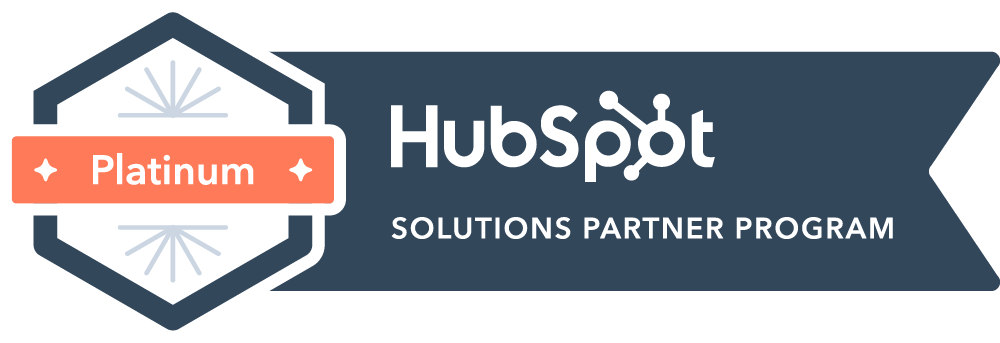How to Align a B2B Appointment Setting Agency with Your Existing Sales Process

Table of Contents Appointment setting is one of the most overlooked parts of the sales process. It is often treated as a numbers game: more dials, more emails, more meetings. Yet for SaaS and B2B companies, the real value lies not in activity, but in the quality of appointments and how seamlessly they connect to the rest of the sales pipeline. That is why B2B appointment setting has become an essential function for companies looking to expand their reach and maximize sales efficiency. Outsourcing this function has grown common among B2B and SaaS companies. By tapping into outsourced appointment setting services, organizations gain immediate access to skilled SDRs, proven outreach methods, and ready-made infrastructure without the long ramp-up period of building in-house. However, outsourcing alone does not guarantee results. Poor integration between an appointment setting agency and internal sales teams can lead to duplicate outreach, wasted budget, inconsistent messaging, and missed opportunities. Understanding the Role of a B2B Appointment Setting Agency At its core, a B2B appointment setting agency provides three functions: prospecting, qualification, and appointment scheduling. These agencies identify the right prospects, qualify them against agreed criteria, and then secure meetings for account executives. Their role is not to close deals but to ensure sales teams spend time with the right people. When aligned properly, agencies complement internal SDRs and AEs rather than compete with them. Internal SDRs may focus on strategic accounts or specific segments, while outsourced SDR services can broaden reach into new markets or support rapid scaling. Together, they expand the top of the funnel and ensure opportunities flow steadily into the sales pipeline. It is also important to clarify the difference between lead generation and appointment setting. Lead generation casts a wide net, collecting names and contact details. Appointment setting goes further by qualifying prospects and securing confirmed meetings, making it far more directly tied to revenue outcomes. Key Challenges Companies Face Despite the clear value, many companies struggle with outsourcing because integration is overlooked. Misalignment between agency SDRs and in-house sales teams can create friction. If goals are unclear, both sides may chase different priorities, leading to inconsistent results. Poor CRM data handoffs are another common issue. If agency-sourced appointments are not properly logged, tracked, and visible in the CRM, opportunities can easily be lost. Similarly, messaging inconsistencies can damage credibility. If prospects receive outreach that does not match the company’s tone or value proposition, trust is eroded before the AE even enters the conversation. Fragmented outreach is particularly damaging. Picture a scenario where an internal SDR and an agency SDR both contact the same account with different messaging. The result is confusion for the prospect and wasted effort for the sales team. 6 Steps to Seamlessly Integrate a B2B Appointment Setting Agency Step 1 – Define Shared Goals and KPIs Alignment begins with clarity. Both the agency and your internal team must agree on what constitutes a qualified appointment. Defining KPIs around metrics like sales-qualified leads, meetings completed, and pipeline contribution prevents confusion and ensures everyone is measured against outcomes that matter. Revenue impact, not activity volume, should be the guiding metric. Step 2 – Map the Buyer Journey Together No agency can succeed without a full understanding of your ideal customer profile, personas, and buying triggers. Mapping the buyer journey together ensures that outsourced SDRs know not only who to target but also how those prospects move through your sales cycle. For example, a SaaS company selling into enterprise IT must make clear which decision-makers matter and how long the buying process typically runs. Without this shared knowledge, even the best appointment setting services will produce mismatched opportunities. Step 3 – Establish a Unified Messaging Framework Consistency in outreach is non-negotiable. Agencies should adopt your brand voice and messaging so prospects receive a coherent experience across email, phone, and LinkedIn. Creating a unified messaging framework ensures that SDRs do not just repeat a script but adapt it while staying true to your value proposition. Testing personalization approaches across channels can help identify what resonates most, but the foundation must always reflect your brand. Step 4 – Integrate Technology and CRM Systems Technology is where alignment often breaks down. Appointments must flow directly into your CRM, whether that is Salesforce, HubSpot, or another system. Manual entry creates gaps and wastes time, while automated syncing ensures AEs have immediate visibility. Proper CRM integration also enables accurate reporting on show rates, conversion rates, and pipeline value. Without this visibility, leadership cannot measure ROI or identify where improvements are needed. Step 5 – Create a Feedback Loop Between SDRs and AEs The handoff between SDRs and AEs is not a one-way street. Weekly feedback sessions are critical for refining lead quality and improving outreach. When AEs share insights about what worked in calls and what did not, agency SDRs can adjust their qualification and messaging accordingly. Over time, this feedback loop strengthens alignment and improves appointment quality. Step 6 – Measure, Optimize, and Scale Integration is not a set-and-forget process. Regular performance reviews ensure the agency continues to deliver value. Tracking metrics like show rates, conversion rates, and pipeline generated provides a clear picture of impact. With these insights, companies can shift budgets, adjust strategies, and expand into new markets. A properly aligned outsourced SDR service does not just fill the pipeline; it scales with your business. Benefits of Proper Integration When integration is done right, the results are clear. A consistent pipeline flow eliminates the feast-or-famine cycles that strain sales teams. Reduced friction in the sales cycle means AEs can focus on advancing deals rather than chasing prospects. Appointment quality improves, leading to higher conversion rates and stronger ROI. Beyond direct revenue impact, alignment also enhances collaboration between sales and marketing, ensuring everyone works toward the same goals. Mistakes to Avoid When Working with an Appointment Setting Agency Companies often undermine their own outsourcing efforts by treating the agency as a vendor rather than a partner. Without proper onboarding
15 Critical Differences Between Demand Capture vs. Demand Generation in B2B SaaS Marketing

Table of Contents B2B SaaS marketing teams often throw around the terms demand generation and demand capture as if they’re interchangeable. They’re not. In fact, confusing the two can be one of the most expensive mistakes a SaaS go-to-market team makes. When your strategy is built on the wrong motion, you either spend big on ads that don’t scale, or you create great content that never converts. SaaS companies that know how to balance both see stronger pipeline velocity, lower CAC, and healthier long-term growth. This breakdown covers 15 critical differences between demand capture and demand generation in SaaS marketing, with a focus on balancing strategy, smart investment, and long-term impact. By the end, you’ll know how to balance the two, where to invest, and how they fuel long-term growth when done right. What are demand generation and demand capture in B2B SaaS? Demand Generation Demand Capture What is it? Demand generation is about building awareness, trust, and future pipeline. It’s a top- and mid-funnel motion where your brand earns attention before buyers are in-market. Demand capture is the flip side of the funnel. Instead of creating awareness, you’re targeting buyers who are already in-market and actively searching for solutions. Goal Create mindshare and brand equity so that when your buyer is ready to purchase, your company is top of mind. Turn active intent into pipeline as fast as possible. Examples Content marketing, SEO, thought leadership, community building. Google Ads, review sites, retargeting, lead forms. Differences Between Demand Capture and Demand Generation in B2B SaaS Let’s break it down difference by difference. 1. Funnel Stage Focus Demand Generation: Top and middle funnel (awareness, education, trust). Here you’re introducing your category, educating buyers about problems they might not even know they have, and establishing your brand as the go-to resource. You’re playing the long game, building relationships with prospects who might not buy for 6-18 months. Demand Capture: Bottom funnel (buyers actively evaluating). These prospects already know they have a problem, understand the solution category, and are comparing vendors. They’re ready to buy, you just need to convince them you’re the best choice. The sales cycle is compressed because the education phase is already complete. 2. Time Horizon Demand Generation: Long-term — 6 to 12 months+ to see ROI. Demand generation is an investment in future pipeline. The content you create, the brand awareness you build, and the thought leadership you establish compound over time. Demand Capture: Short-term — pipeline in weeks or months. When someone searches for “best CRM software” on Google, they’re ready to buy now. Your Google Ad can generate a demo request within hours of launch. The ROI is immediate but doesn’t compound the same way. 3. Target Audience Demand Generation: The entire addressable market, even those unaware of the problem. You’re casting a wide net to educate prospects who might not even realize they need your solution. This includes people who are still using manual processes, outdated tools, or haven’t recognized the pain points your product solves. Demand Capture: In-market buyers already searching for solutions. These prospects have done their homework. They understand the problem, know solutions exist, and are actively evaluating options. Your job is to get in front of them at the moment they’re ready to make a decision. 4. KPIs Tracked Demand Generation: Engagement, MQLs, webinar sign-ups, brand lift, content downloads, social shares, organic traffic growth. These metrics focus on reach, engagement, and relationship building. You’re measuring whether people find your content valuable and are willing to engage with your brand over time. Demand Capture: Pipeline, CAC, win rates, revenue, conversion rates, cost per SQL, time to close. These are hard revenue metrics that directly tie to business outcomes. Every dollar spent should generate measurable pipeline within a defined timeframe. 5. Channel Mix Demand Generation: SEO, LinkedIn organic, podcasts, blogs, community forums, events, PR, brand partnerships. These channels are about building authority, sharing knowledge, and becoming part of industry conversations. They require consistent investment and patience but create compound returns. Demand Capture: Google Ads, review sites (G2, Capterra), retargeting, LinkedIn ads, and intent data platforms. These channels intercept prospects who are already in buying mode. They’re more expensive per impression but generate higher conversion rates. 6. Content Type Demand Generation: Educational guides, industry reports, ebooks, thought leadership articles, webinars, podcasts. This content builds trust and positions your company as an expert. It answers broad questions like “How do you know if you need marketing automation?” rather than “Why choose our marketing automation tool?” Demand Capture: Product comparisons, pricing pages, case studies, free trials, ROI calculators, vendor comparison guides. This content helps prospects make buying decisions. It’s product-focused and designed to convert prospects who already understand their need. 7. Budget Allocation Demand Generation: Higher upfront investment with slower payback. You might spend $50k on a research report that generates leads over 18 months. The cost-per-lead looks expensive initially, but improves dramatically over time as the content continues generating organic traffic and social shares. Demand Capture: Immediate ROI-driven spend with predictable returns. A Google Ads campaign might generate $3 in pipeline for every $1 spent within 30 days. The ROI is immediate and measurable, but it doesn’t compound, you have to keep spending to maintain results. 8. Sales/Marketing Alignment Demand Generation: Marketing nurtures prospects through multiple touchpoints before passing to sales. The lead nurturing process might involve 6-12 touchpoints over several months. Sales receives prospects who are educated about the problem and solution category, but may need additional qualification. Demand Capture: Sales follows up directly after hand-raise with minimal delay. These prospects are ready for immediate sales engagement. The handoff needs to happen within hours, not days, because competitors are also targeting the same in-market buyers. 9. Technology Tools Demand Generation: Marketing automation platforms, content management systems, social media schedulers, brand monitoring tools, survey platforms, event management software. These tools focus on content creation, distribution, and engagement measurement across long buyer journeys. Demand Capture: Intent data platforms, lead capture forms, CRM
The Ultimate Guide to B2B SaaS Demand Generation in 2026

Table of Contents B2B SaaS demand generation in 2026 is no longer about producing more leads but about creating qualified demand that sustains revenue growth while customer acquisition costs (CAC) continue to climb. Many SaaS leaders now recognize that lead volume alone does not equal success. Marketing must influence earlier in the buying cycle, sales must engage with sharper focus, and revenue leaders must ensure tighter alignment across the funnel. We’re examining what demand generation in B2B SaaS looks like in 2026, how it differs from lead generation, and the strategies defining high-performing companies. From AI-powered personalization to ABM-driven targeting and data-backed measurement, we will break down the full picture. Finally, we will look at benchmarks, pitfalls to avoid, and how Whistle supports SaaS companies in building sustainable demand engines. What is demand generation in B2B SaaS? Demand generation is the integrated set of strategies and tactics used to build qualified interest across the entire SaaS buyer journey. Unlike lead generation, which is often transactional and volume-driven, demand generation focuses on creating market awareness, guiding buyers through consideration, and shaping intent that results in pipeline growth. Where lead generation might hand over a contact form from an ebook download, demand generation works to ensure that by the time the prospect reaches sales, they understand the product, see its value, and are engaged with the brand. The distinction is important. As SaaS markets mature and competition grows, generating leads without demand often results in poor conversion rates, inflated CAC, and misalignment between marketing and sales. The macro context: slowing growth, rising CAC, competitive SaaS market Growth rates in SaaS have slowed compared to the last decade. With more vendors in every category, customer acquisition costs are increasing, payback periods are stretching, and efficiency is under scrutiny. Investors are demanding predictable revenue engines, not just rapid top-line expansion. Demand generation in 2026 must reflect this reality. It must create measurable impact across the funnel, align with revenue objectives, and balance both marketing-driven influence and sales-driven engagement. How the B2B SaaS Buyer Journey Has Evolved Buying software has become more complex. Gartner reports that the average purchase decision now involves 6 to 10 decision-makers. These committees often span IT, finance, operations, and business unit leaders, each with different priorities. At the same time, buyers complete 60–70% of their research independently before engaging a vendor. They rely on peer reviews, analyst reports, thought leadership, and dark social channels where influence is harder to track. This means demand generation strategies in 2026 must go beyond visible touchpoints. The “dark funnel”, activity happening in communities, Slack groups, and private conversations, plays a critical role in shaping decisions. Companies that ignore these hidden interactions risk being left out of buyer consideration altogether. Core Components of B2B SaaS Demand Generation in 2026 ICP and Persona Development The foundation of demand generation is a well-defined Ideal Customer Profile (ICP). But in 2026, this is no longer about static firmographics. Leading SaaS companies build data-rich personas that integrate intent signals, behavioral data, and firm-level insights. For example, identifying a company that recently hired a Head of RevOps, combined with signals showing increased interest in Salesforce integrations, can signal strong buying intent for a SaaS solution in that space. These insights allow for precise targeting and higher conversion potential. Full-Funnel Content Strategy Content remains central, but it must be built to map directly to the buyer journey. At the awareness stage, webinars, podcasts, and thought leadership establish credibility. At the consideration stage, case studies and ROI-focused assets guide evaluation. At the decision stage, interactive demos and proof-of-concept offers help finalize purchase decisions. A content pipeline in 2026 must balance formats, channels, and depth to influence across multiple stakeholders. Multi-Channel Execution No single channel is sufficient. Effective SaaS demand generation uses a multi-channel approach that integrates SEO, LinkedIn campaigns, paid search, account-based marketing, and participation in dark social conversations. Each channel reinforces the others, creating consistent visibility across the buyer journey. AI-Powered Personalization and Automation AI is reshaping how personalization works in SaaS demand generation. Predictive scoring models identify which accounts are most likely to convert, while AI-driven tools adapt messaging to match prospect behavior in real time. This allows companies to scale personalization without sacrificing relevance. Automation also reduces inefficiencies, freeing sales and marketing teams to focus on strategic engagement instead of repetitive tasks. Intent Data and ABM-Driven Targeting Account-Based Marketing (ABM) is no longer optional for SaaS companies selling into mid-market or enterprise accounts. In 2026, intent data powers ABM programs by identifying which accounts are actively researching relevant topics. This ensures marketing budgets are spent on companies with genuine buying interest rather than broad, low-return outreach. Data-Driven Measurement and Optimization Measurement is where many demand generation strategies falter. SaaS companies must track beyond vanity metrics like impressions or downloads. The focus in 2026 is on pipeline velocity, CAC payback, and attribution models that reveal which campaigns are driving revenue impact. With this level of visibility, marketing leaders can reallocate budget with confidence, align with sales teams, and prove ROI to stakeholders. SaaS Demand Generation Strategy Framework: 90-Day Roadmap Days 1–30 – Foundation The first 30 days focus on establishing the foundation. This includes ICP workshops to refine targeting, a full audit of the tech stack to ensure systems can support advanced attribution, and development of a content pipeline aligned to buyer stages. Days 31–60 – Measurement and Attribution The next 30 days emphasize execution and measurement. Multi-channel campaigns are launched, early performance data is tracked, and attribution models are tested to ensure reliable insights. This is also when marketing and sales alignment checkpoints are scheduled to calibrate. Days 61–90 – Optimization and Scale In the final stage, budgets are reallocated to top-performing campaigns, ABM programs are scaled to new target accounts, and sales-marketing alignment is strengthened. The outcome should be a measurable pipeline lift with improved efficiency and better visibility across the funnel. Budgets and Benchmarks for B2B SaaS Demand Generation Most
15 Critical Questions to Ask Appointment Generation Companies

Table of Contents Your sales pipeline is only as strong as the meetings that feed it. That’s why appointment generation companies have become a critical growth lever for B2B organizations in 2025. If you’re scaling a SaaS startup or expanding into new markets, the right outsourced SDR partner can help you tap into predictable pipeline and revenue. But the challenge is not all appointment setting vendors are created equally. Many promise the world, but only a handful consistently deliver qualified meetings that convert into revenue. Choose poorly, and you risk wasted spend, missed targets, and a frustrated sales team that loses confidence in outsourced solutions altogether. This checklist will give you a structured framework to evaluate appointment generation companies so you can separate the real partners from the pretenders. Use these 15 questions to conduct thorough due diligence and make an informed decision that drives measurable results for your sales organization. Performance and Results Questions 1. What are your typical conversion rates from prospect to qualified meeting? A credible vendor should be transparent about conversion rates and explain how they vary by industry. In SaaS, for example, expect 2–5% conversion on cold outreach done well. Professional appointment generation companies track these metrics religiously and can provide benchmarks based on your specific market segment. Red Flags: Vendors quoting unrealistic conversion rates (e.g., 10%+ consistently across industries). Refusing to give benchmarks or hiding behind “it depends.” No clarity on what they define as a “qualified meeting.” 2. How do you measure appointment quality, and what metrics do you track? The best appointment setting services track not just volume but quality, show rates, opportunity conversion, and eventual pipeline impact. They should also have clear definitions for what constitutes a qualified meeting versus a general interest conversation. This distinction is crucial for aligning expectations and measuring true performance. Red Flags: Focus only on vanity metrics (calls made, emails sent). Lack of data on show rates or opportunity conversion rates. Vague responses like “we get you meetings” without defining quality standards. 3. Can you provide case studies specific to my industry or similar companies? Look for proof of success in your vertical. If you’re in cybersecurity, can they show results with similar SaaS providers? Case studies and verified references separate proven vendors from those still experimenting. Red Flags: No industry-specific examples. Reluctance to provide references or connect you with existing clients. Overly generic case studies with no measurable ROI data. Team Structure and Quality Questions 4. Who will be handling my account, and what is their experience level? A dedicated account manager or team is essential. Shared SDR pools often lead to diluted focus and lower results. Ask to meet the team that will represent your brand. Red Flags: No dedicated account manager — instead, a “shared pool” of SDRs. Inability to introduce you to the team pre-contract. High reliance on junior SDRs with no oversight. 5. How are your SDRs recruited, trained, and retained? Appointment generation relies heavily on SDR quality. Vendors with structured training, coaching, and low churn will deliver consistency. High turnover often signals deeper issues. Red Flags: No formal training program beyond “basic onboarding.” High turnover rates (SDRs churning every 3–6 months). Outsourced SDR teams without any performance coaching or QA process. 6. What is your team’s geographic location and language capabilities? Global buyers expect cultural alignment and language fluency. Onshore teams may suit enterprise accounts, while nearshore/offshore can be cost-effective if quality is maintained. Red Flags: Focus only on vanity metrics (calls made, emails sent). Lack of data on show rates or opportunity conversion rates. Vague responses like “we get you meetings” without defining quality standards. Process and Methodology Questions 7. What is your approach to prospect research and list building? Great vendors don’t just buy lists — they use human validation, intent data, and ICP alignment. Ask how they source and qualify contacts. Red Flags: Reliance on one channel only (e.g., cold calling without email or LinkedIn support). Inability to adapt to your ICP’s channel preferences. Poor compliance practices (spammy email domains, non-compliant data use). 8. How do you develop and iterate on outreach messaging? B2B appointment setting requires ongoing optimization. Look for vendors that A/B test subject lines, cadences, and personalization strategies. Red Flags: “One-size-fits-all” templates are used across all clients. No A/B testing or personalization beyond a first name. No clear strategy for refining messaging over time. 9. What outreach channels do you use? (phone, email, LinkedIn, etc.) Multi-channel campaigns convert better. A strong vendor should integrate cold calling, email outreach, and social selling into one unified approach based on your buyer preferences and industry norms. Red Flags: Reliance on one channel only (e.g., cold calling without email or LinkedIn support). Inability to adapt to your ICP’s channel preferences. Poor compliance practices (spammy email domains, non-compliant data use). Technology and Integration Questions 10. What technology stack do you use for appointment setting? Ask about sequencing platforms, enrichment tools, and analytics dashboards. Leading agencies leverage tools like Salesloft, Outreach, or HubSpot Sales Hub. Red Flags: Outdated or manual tools for sequencing and tracking. No use of analytics dashboards for transparency. Reliance on free/low-tier tools with limited functionality. 11. How will you integrate with our existing CRM and sales tools? Smooth integration ensures your team has visibility into every touchpoint. If you use Salesforce or HubSpot, make sure the vendor has proven experience in those ecosystems. Note: Whistle is a HubSpot Platinum Partner, ensuring seamless CRM alignment. Red Flags: No direct CRM integration — requiring manual data entry. Lack of experience with major platforms (Salesforce, HubSpot, Pipedrive). Ignoring compliance/security standards during data transfer. Pricing and Contract Questions 12. What pricing models do you offer and what’s included? Compare retainers, pay-per-performance, or hybrid pricing. Each has pros and cons — retainer models provide consistency, while performance-based models tie incentives directly to results. Red Flags: Hidden costs for essential services like list building or reporting. Only one pricing
7 Ways Appointment Generation Companies Transform Your Sales Process

Table of Contents Time is your most valuable currency, and the more of it your sales team spends chasing unqualified prospects, the less they have for closing deals that matter. That’s where appointment generation companies come in. They are specialized partners who handle the heavy lifting of prospecting, qualifying, and booking meetings with decision-makers who want to talk to you. According to HubSpot’s State of Sales report, 40% of salespeople say prospecting is the most challenging part of their job, yet it consumes nearly 21% of their day. For fast-growing startups and scaling enterprises alike, working with an appointment generation partner can mean the difference between a sluggish pipeline and a revenue engine firing on all cylinders. Here’s how they transform your sales process from end to end: 1. They Turn Cold Leads Into Warm Conversations Your sales team’s biggest bottleneck isn’t closing, it’s starting the right conversations. Appointment generation services focus entirely on warming up prospects before they land in your sales reps’ calendars. The average B2B buyer is 57% of the way through their purchasing decision before they even speak to a sales rep, according to Gartner research. Professional appointment setters understand this reality and use sophisticated nurturing sequences to engage prospects across multiple touchpoints before scheduling meetings. Instead of handing off cold names from a spreadsheet, these companies qualify prospects using personalized outreach across phone, email, and LinkedIn. They leverage behavioral data, intent signals, and social proof to create meaningful connections with decision-makers. The result? Your sales team walks into meetings where the buyer already knows who you are, understands your value proposition, and has a genuine interest in exploring a solution. 2. They Build a Consistent Top-of-Funnel Flow Feast-or-famine prospecting is a growth killer. One month your reps are chasing 20 hot leads, the next month they’re scrambling for anyone to talk to. B2B appointment setting companies solve this by delivering a steady stream of qualified meetings every week. This consistency is crucial for several reasons. It allows for predictable revenue forecasting, which is essential for growth planning and investor confidence. It keeps your sales team in a closing mindset rather than a hunting mindset. When reps know they have a full calendar of qualified prospects, they can focus on preparation, relationship building, and deal advancement rather than scrambling for their next conversation. Professional appointment generation companies use systematic approaches to ensure consistent output. They maintain healthy prospect pipelines, implement standardized qualification frameworks, and use performance analytics to optimize their processes continuously. This systematic approach eliminates the unpredictability that plagues most internal prospecting efforts. 3. They Unlock Precision Targeting You Can’t Replicate In-House Finding the right buyers isn’t about buying a generic contact list. Leading sales appointment generation providers use advanced data tools, intent signals, and human research to identify prospects who match your ICP (Ideal Customer Profile) and are in-market now. Modern appointment generation companies leverage sophisticated technology stacks that include intent data platforms, social selling tools, and AI-powered personalization engines. They combine these technological capabilities with human insight to create targeting precision that’s difficult to achieve with internal resources. They also segment by vertical, job title, company size, technographic data, and even behavioral cues, ensuring your message lands with the right person at the right time. This multi-dimensional targeting approach significantly improves response rates and meeting quality compared to broad-based prospecting efforts. 4. They Shorten the Sales Cycle Every extra touchpoint between “hello” and “closed deal” adds friction. Lead generation and appointment setting services compress that cycle by removing early-stage roadblocks and ensuring prospects enter your sales process with proper context and qualification. The Sales Benchmark Index reports that companies with strong qualification processes see 28% shorter sales cycles compared to those with weak qualification. Professional appointment setters excel at this qualification process because it’s their core competency. Because the prospect has been qualified, informed, and engaged before your sales rep steps in, you can often skip unnecessary discovery calls and move straight to demos or proposals. This acceleration doesn’t just save time, but it also increases close rates by maintaining momentum and buyer engagement throughout the process. 5. They Integrate With Your Sales Tech Stack The best outsourced appointment setting teams don’t operate in isolation — they plug directly into your CRM, sales engagement platform, and reporting dashboards. This integration is crucial for maintaining visibility and ensuring seamless handoffs between prospecting and closing activities. Modern appointment generation companies are experienced with leading sales technologies including HubSpot, Salesforce, Outreach, SalesLoft, and dozens of other platforms. They understand how to maintain data hygiene, create proper lead scoring, and establish automated workflows that support your sales process. 6. They Help You Scale Without Hiring Headaches Hiring and training SDRs is expensive and time-consuming. The average cost to recruit and onboard a new SDR exceeds $15,000, and that’s before considering the 3-6 month ramp time required to reach full productivity. Even worse, SDR churn rates can be as high as 39% annually according to Bridge Group research, which means you’re constantly in a cycle of recruitment and onboarding. With an outsourced appointment generation partner, you get an experienced team up and running in weeks — without the overhead, management, and HR challenges of building it in-house. These teams come pre-trained with proven methodologies, established workflows, and refined scripts that have been tested across multiple clients and industries. 7. They Give Your Sales Team Back the Time to Sell Your highest-value salespeople should be closing deals, not chasing unresponsive leads. Research from CSO Insights shows that top-performing sales organizations spend 65% more time in front of customers compared to underperforming ones. By outsourcing prospecting and qualification, you free your sales team to focus on: Running high-impact demos and discovery conversations Nurturing strategic accounts and building executive relationships Negotiating and closing larger, more complex deals Providing post-sale support that drives expansion and referrals The impact compounds over time — more deals per rep, higher average deal size, and stronger win
How Appointment Generation Companies Eliminate the Cost of Poor Lead Generation

Table of Contents B2B companies often underestimate how damaging poor lead generation can be. It is not just about the wasted spend on acquiring irrelevant contacts. Low-quality leads ripple through the entire sales pipeline, inflating costs, reducing productivity, and stretching sales cycles. Poor lead generation can be defined simply: prospects who lack buying intent, fall outside the target market, or lack decision-making authority. On paper, they look like pipeline opportunities. In reality, they drain sales teams’ time, inflate acquisition costs, and distort performance metrics. The impact is significant. According to Ascend2, 77% of B2B marketers cite improving lead quality as one of the most important goals in their lead generation strategy, and 53% identify it as their most significant barrier. For SaaS businesses, where sales cycles are lengthy and acquisition costs are closely scrutinized, poor lead generation is more than inefficient — it is expensive. Appointment generation companies exist to solve this problem directly. By qualifying prospects, aligning outreach with market needs, and focusing on meetings with genuine decision-makers, they prevent businesses from paying the hidden costs of poor-quality leads. Quantifying Direct Financial Costs of Poor Leads The true cost of poor lead generation becomes clear once you follow the money. Every weak lead has a ripple effect that compounds over time. Cost per Acquisition Calculations Marketing teams often track cost per lead, but that metric hides the reality. A low-cost lead that never converts is not cheap. What matters is cost per acquisition (CPA). If it takes 50 poor leads to generate a single customer, CPA balloons beyond sustainable levels. A simple framework illustrates the point: CPA = (Total Spend on Lead Generation) ÷ (Number of Customers Acquired) Without quality filtering, spend increases while conversion rates fall. This is how poor leads silently inflate acquisition costs. Wasted Sales Team Compensation Sales development representatives (SDRs) and account executives are expensive resources. When they spend hours chasing unqualified prospects, salaries and commissions turn into sunk costs. If an AE spends 20 percent of their time on low-quality leads, that translates directly into reduced pipeline and missed revenue opportunities. Technology and Infrastructure Costs Every poor lead still enters the system. That means CRM entries, automation workflows, and data enrichment costs, all applied to prospects who will never buy. Multiply this across thousands of weak contacts, and infrastructure costs rise for no return. Marketing Budget Waste Paid campaigns, webinars, and content distribution all contribute to leads. If the targeting is wrong or the qualification is absent, those dollars vanish without a measurable return. Many SaaS companies find that a large portion of marketing spend fails not because of volume but because of poor alignment with buyer intent. How Appointment Generation Companies Solve These Problems Appointment generation companies specialize in fixing the inefficiencies that poor lead generation creates. Their model is designed to prioritize quality over volume, and that distinction changes outcomes across the pipeline. Specialized Expertise in Target Market Qualification Appointment setting partners build detailed profiles of the target market and decision-making personas. They know the industries, titles, and buying signals that matter, and they apply this expertise before a single outreach email is sent. Established Processes for Identifying High-Intent Prospects Instead of filling the funnel indiscriminately, appointment generation services focus on identifying prospects who are actively researching solutions or who match established buying criteria. This alignment increases conversion rates and shortens sales cycles. Economies of Scale and Technology Advantages These companies operate with infrastructure already in place: advanced sales engagement platforms, intent data tools, and experienced SDR teams. Businesses gain access to these systems without building them internally. Flexible Scaling Because appointment setting companies already have trained staff and established processes, businesses can scale outreach up or down quickly depending on goals. This avoids the overhead of hiring or downsizing internal teams. Trained SDRs Without Recruitment and Training Costs Recruiting SDRs is expensive and time-intensive. Training them to full productivity can take months. Appointment generation companies provide ready-to-go SDRs who are already trained in outreach, qualification, and appointment booking. Key Features to Look for in Appointment Setting Partners Not all appointment generation providers operate at the same level. Choosing the right partner requires evaluating key features that indicate quality and reliability. Industry-Specific Experience Experience in your industry matters. An SDR who understands SaaS sales conversations, for example, will perform better than one without that context. Transparent Reporting and Performance Metrics Clear reporting on outreach volume, conversion rates, and meetings booked allows you to measure ROI accurately. Transparency prevents the risk of paying for activity rather than results. Quality Assurance Processes Look for providers that monitor and review calls, validate data quality, and enforce consistency. Quality assurance ensures that meetings booked are truly with qualified decision-makers. Technology Stack and Integration Capabilities A strong partner will integrate seamlessly with your CRM and tech stack. This avoids data silos and ensures sales teams can act immediately on booked meetings. Pricing Models and ROI Measurement Clear pricing structures tied to measurable outcomes give businesses confidence in ROI. The right model should reduce risk and align incentives with your success. Case Study: Before and After Metrics Whistle has worked with companies across industries to turn weak pipelines into measurable revenue. A clear example is Argus Cyber Security (now PlaxidityX), a global leader in automotive cybersecurity. Argus faced low inbound conversion rates, winning just 2 out of every 83 qualified leads. Their Account Executives relied mainly on email and lacked structured qualification processes, which limited results. Whistle introduced stronger qualifications, added transparency, and provided one full-time seat (two SDRs) to manage leads and prospect engagement. Within three months, the campaign delivered 29 meetings, 6 SQLs, $750,000 in opportunities, and a 41x ROI. An internal survey showed 83 percent of employees rated the project positively. Implementation Timeline and Process Engaging with an appointment generation company is not a long, disruptive process. Most businesses begin to see results within weeks. Onboarding Process The process typically starts with a workshop to define the target market,
25 Proven SaaS Lead Generation Strategies That Drive Exponential Growth

Table of Contents When you’re running a SaaS business, growth is only as good as your lead pipeline. The right lead generation strategy can help you capture the attention of your ideal buyers, shorten sales cycles, and increase your monthly recurring revenue (MRR). If you’re scaling a startup or optimizing a mature sales engine, these 25 proven SaaS lead generation strategies will give you the blueprint to drive consistent, high-quality pipeline. If you’re looking for expert help, a specialized SaaS lead generation company like Whistle can build and execute these strategies end-to-end. 1. Define a Hyper-Specific ICP (Ideal Customer Profile) Vague targeting leads to wasted spend. Narrow your ICP to the industries, company sizes, job titles, and pain points most likely to convert. Most SaaS companies make their ICP too broad, thinking it will increase their total addressable market. In reality, specificity drives better conversion rates and shorter sales cycles. Pro tip: Use tools like LinkedIn Sales Navigator or ZoomInfo for precision targeting. 2. Build Buyer Personas That Go Beyond Demographics A winning SaaS lead generation company knows it’s not enough to know your buyer’s title; you need to understand their motivations, fears, and decision-making process. Layer in psychographic and behavioral data. What keeps them awake at night? What metrics are they judged on? How do they prefer to consume information and make purchasing decisions? 3. Leverage Multi-Touch Outbound Campaigns Cold calls alone won’t cut it. Combine cold calling services, targeted email sequences, LinkedIn outreach, and remarketing ads for maximum touchpoint coverage. The modern B2B buyer requires 7-10 touchpoints before they’re ready to engage, so your campaigns need to be persistent and multi-channel. 4. Invest in SEO for Sustainable Inbound Pipeline Optimizing for keywords like “best [your SaaS category] tools” or “how to solve [problem your SaaS solves]” drives long-term organic leads. Partner with SEO specialists to build topic clusters and authority content. SEO is a long-term play, but it delivers compound returns as your content gains authority and rankings improve. 5. Use Content Upgrades to Capture Leads Offer downloadable guides, calculators, or templates gated behind a form. The higher the perceived value, the more qualified the leads you’ll capture. Make sure your content upgrades are directly related to your product’s value proposition and provide immediate, actionable value to prospects. 6. Launch Product-Led Growth (PLG) Funnels If your product lends itself to self-serve signups, create a freemium plan or trial that allows prospects to experience value before speaking to sales. PLG reduces friction in the buyer journey and can significantly lower customer acquisition costs while increasing conversion rates. 7. Run Targeted LinkedIn Ads LinkedIn’s precision targeting for job titles, industries, and company sizes makes it perfect for B2B SaaS lead generation. Use conversation ads and retargeting for the best results. LinkedIn ads tend to have higher CPCs than other platforms, but the lead quality often justifies the investment for B2B SaaS companies. 8. Activate Intent Data Use platforms like 6sense or Bombora to find prospects actively researching your category, then prioritize them in your outreach. Intent data allows you to focus your resources on prospects who are already in-market, dramatically improving conversion rates and shortening sales cycles. 9. Partner with Complementary SaaS Companies Co-marketing partnerships help you reach aligned audiences without direct competition. Run joint webinars or bundled offers. Look for companies that serve the same buyer but solve different problems, creating natural partnership opportunities that benefit both organizations. 10. Publish Data-Backed Industry Reports Original research establishes credibility and earns backlinks. A good SaaS lead generation company can help with survey design, outreach, and distribution. Industry reports position your company as a thought leader while generating substantial lead volume and PR coverage. 11. Use Webinars as Demand Accelerators Webinars allow you to educate and engage prospects in real time. Promote them via email, social, and partner channels. Follow up within 24 hours to convert interest into meetings. Educational webinars that focus on industry challenges rather than product pitches tend to generate the highest-quality leads. 12. Optimize Your Free Trial Conversion Path Don’t just collect trial signups, nurture them with onboarding sequences, in-app guides, and triggered sales outreach. Most SaaS companies focus on getting trial signups but neglect the activation and conversion process, leaving significant revenue on the table. 13. Build an SDR Team (or Outsource It) An in-house SDR function can be costly and slow to scale. An outsourced SDR company like Whistle can hit the ground running with trained reps, proven scripts, and established workflows. This approach eliminates the hiring, training, and management overhead while delivering immediate results. 14. Run Retargeting Ads Across Channels Retarget prospects who visited your pricing page or demo page but didn’t convert. Use urgency-driven copy and customer proof points. Retargeting campaigns often deliver the highest ROI because they target prospects who have already shown interest in your solution. 15. Create a Customer Referral Program Reward your existing customers for introducing you to new ones. Referrals tend to close faster and churn less. Design incentive structures that motivate customers to make introductions without feeling like they’re being asked to do sales work for you. 16. Engage in Niche Community Marketing Participate in industry-specific forums, Slack groups, and niche LinkedIn groups. Provide value before pitching your solution. Community marketing requires patience and authenticity, but can generate highly qualified leads who are already warmed up through your helpful contributions. 17. Use Conversational Marketing Live chat and AI chatbots help you capture and qualify leads in real time. Route qualified chats directly to your sales team or SDRs. Implement chatbots on high-intent pages like pricing, features, and case studies for maximum impact. 18. Implement Account-Based Marketing (ABM) Target a curated list of high-value accounts with personalized campaigns. This works especially well for enterprise SaaS deals. ABM requires more investment per prospect but delivers significantly higher conversion rates and deal sizes for target accounts. 19. Optimize Your Landing Pages for
Case Study: How a FinTech Software Leader Scaled Sales with Whistle in 6 Months

Table of Contents Fintech companies face a constant balancing act: expanding quickly enough to meet market demand while ensuring that sales execution keeps pace with product innovation. Scaling internationally adds another layer of complexity, with new markets, cultural nuances, and competitive pressures shaping every move. For one fintech software leader, achieving rapid growth meant finding a partner who could deliver results without delay. In just six months, Whistle helped the company schedule 78 meetings, hold 46 conversations, and create 29 new opportunities. The campaign highlights how fintech appointment setting, when managed strategically, can accelerate expansion and strengthen long-term sales performance. About the Client The client is a fintech software company specializing in AI-powered transaction monitoring. Their solution enables banks and payment providers to increase revenue through reliable domestic and cross-border payments. With Series D funding and a team of 51 to 200 employees, the company had established itself as a market leader. At this stage, the next challenge was translating strong product momentum into consistent international sales growth. The Challenges Need for Rapid Sales Scale-Up The company had reached a point where speed was critical. Building an in-house sales development team from scratch would have delayed growth at a time when opportunities were accelerating. They needed a solution that could generate qualified sales appointments immediately. Limited International Sales Coverage Their existing sales team had succeeded locally, but international markets required a more structured approach to sales. Expanding into the US and UK, two of the most competitive fintech hubs, and later into Africa, demanded both precision and resources they did not yet have. Requirement for Flexibility and Speed Growth priorities change quickly. The company needed flexibility to adjust its outreach across regions without having to rebuild its internal structure each time. A partner that could combine speed with adaptability was essential. Our Approach Whistle partnered with the client to design a campaign that matched strategic priorities with tactical execution. Structured Market Prioritization The campaign began by focusing on the US and UK markets. As the client refined its strategy, the focus shifted to Africa and the UK. This ability to pivot quickly ensured that resources were always aligned with the highest-value opportunities. Dedicated Resource Allocation Whistle provided geo-dedicated appointment setters, creating outreach that felt local and relevant. This approach improved prospect engagement and produced stronger handoffs to the client’s internal sales team. Clear Communication & Onboarding A structured onboarding process and strong communication between Whistle and the client’s Head of Sales established alignment early. This foundation allowed both teams to operate as one, adjusting seamlessly as the campaign evolved. The Results Campaign Performance Within six months, Whistle delivered measurable results: 78 meetings scheduled 46 meetings held 29 new opportunities created Impact These results gave the client’s sales team a consistent flow of qualified opportunities, validated their ability to scale internationally, and demonstrated that outsourcing appointment setting can be a practical strategy for growth-stage fintech software companies. Key Insights Several important takeaways from this campaign are worth highlighting for fintech software companies considering how to scale their sales development efforts: Market focus outperforms broad coverage. Prioritizing specific geographies created momentum and measurable returns. Sales pipeline growth is less about volume and more about precision. Dedicated teams improve conversion. Geo-specific appointment setters not just added capacity but also local context. The difference between a generic outreach and a tailored conversation showed up in the quality of meetings. Sales development thrives on integration, not separation. The client treated Whistle as part of its own sales organization, and that alignment proved critical. Outsourcing sales development is most effective when it feels like an extension of the internal team, not a disconnected vendor. Taken together, these insights highlight a broader point: fintech sales growth depends on strategic clarity and disciplined execution. Companies that scale effectively know where to focus, who should execute, and how to maintain tight alignment between internal and external resources. Testimonial “Whistle’s thorough onboarding process and the strong communication between the two teams contributed greatly to the success of the campaign.” – Head of Sales and Business Development, Client Company Future Outlook This case illustrates a larger trend in fintech sales strategy. As more fintech software companies expand internationally, the ability to scale quickly without losing precision will become a defining advantage. Building in-house teams still has its role, but flexibility and speed are increasingly non-negotiable. For this client, Whistle’s support created a repeatable model: structured market prioritization, dedicated outreach, and integrated communication. That model continues to guide their expansion into new regions, giving them a sales development process that adapts as their business grows. For other fintech companies, the lesson is clear. Appointment setting is more than a tactical activity; it is a strategic enabler of international sales growth. With the right partner, companies can scale pipelines rapidly, improve efficiency, and capitalize on opportunities that might otherwise be missed. Whistle works with fintech software companies and other high-growth businesses to build sales pipelines that deliver measurable results. If scaling your reach and securing qualified appointments is a priority, explore how Whistle can support your growth.
10 Questions to Ask Before Hiring a SaaS Lead Generation Company
Table of Contents In SaaS, your pipeline is everything. A strong flow of qualified meetings fuels growth, keeps your sales team focused, and ensures you’re not relying on “hope” to hit your revenue targets. But generating that pipeline consistently and at scale isn’t easy. That’s why many sales and marketing leaders turn to a SaaS lead generation company. The right partner can act as an extension of your team, delivering high-quality appointments with decision-makers who are ready to buy. The wrong partner? They can waste months of budget and erode trust with your target market. According to HubSpot’s State of Sales Report, 61% of marketers consider generating traffic and leads their top challenge. For SaaS companies specifically, this challenge is amplified by longer sales cycles and complex buying committees that can include everyone from IT managers to C-suite executives. To help you make the right call, here are 10 essential questions to ask any potential appointment setting partner before signing a contract. 1. Do They Specialize in SaaS or B2B Tech? Not all lead generation is created equal. Selling SaaS is very different from selling consumer products or one-off services. The sales cycles are longer, the stakeholders are more complex, and the value proposition often needs deep explanation. A B2B lead generation agency with SaaS experience will understand how to position subscription-based value, navigate multi-stakeholder buying groups, and use messaging that addresses both technical and business decision-makers. They’ll know that a typical SaaS sale involves an average of 6.8 stakeholders according to Gartner research, and they’ll craft outreach strategies accordingly. An agency that’s fluent in SaaS will ramp faster, produce better-qualified leads, and save you from costly trial-and-error. 2. What Is Their Approach to Targeting and ICP Alignment? One of the most common appointment setting challenges is chasing the wrong prospects. If your Ideal Customer Profile (ICP) is too broad or based on outdated assumptions your calendar will fill with low-value meetings. The best partners ask how you define and refine your ICP, whether you use firmographic, technographic, and intent data to guide targeting, and how often you review and adjust based on performance. According to Salesforce research, companies that align their sales and marketing teams around a well-defined ICP see 208% higher revenue growth. A sophisticated partner will leverage tools like ZoomInfo, Apollo, or Clearbit to build precise targeting frameworks that go beyond basic demographics to include technology stack, growth stage, and buying intent signals. Best practice: The right appointment setting partner will collaborate with you to build a precise targeting framework and continually fine-tune it to improve results. 3. How Do They Source and Enrich Lead Data? Great outreach starts with great data. If your partner is relying on generic list providers, you’ll get bounces, irrelevant contacts, and unresponsive prospects. Look for a lead qualification services partner who uses multiple trusted data sources, validates and enriches contact data in real time, and segments lists for personalized outreach. They should have processes for cross-referencing multiple databases, verifying email deliverability, and maintaining GDPR compliance. The cost of bad data is significant. IBM estimates that poor data quality costs U.S. businesses $3.1 trillion annually. In the context of lead generation, bad data means wasted outreach efforts, damaged sender reputation, and missed opportunities with your actual target prospects. Pro tip: Poor data is a silent pipeline killer. Ask for examples of their data hygiene process and how they maintain list freshness over time. 4. What Outreach Channels Do They Use? If a potential partner’s outreach strategy begins and ends with email, that’s a red flag. Modern top-of-funnel sales strategy blends multiple channels: email, phone, LinkedIn, and other social channels, and direct mail or events when relevant. Research from Rain Group shows that it takes an average of 8 touchpoints to generate a viable sales opportunity, and those touchpoints need to span multiple channels to be effective. Why multichannel wins: Different prospects respond to different mediums. The more touchpoints, the better your chances of starting a conversation. A sophisticated partner will also understand channel sequencing, knowing when to follow up an email with a phone call, or when to connect on LinkedIn after a successful email exchange. 5. How Do They Personalize Messaging at Scale? Prospects expect messages that feel relevant, not spammy templates blasted to thousands. According to Campaign Monitor, personalized email campaigns deliver 6x higher transaction rates. The challenge is maintaining personalization while operating at scale. Leading agencies use a combination of automation and human creativity to achieve this balance. They gather personalization insights from multiple sources—recent company news, social media activity, technology stack changes, or industry-specific pain points. A strong SaaS lead generation company will combine data signals with human creativity to craft messaging that feels one-to-one, even when running at scale. They’ll A/B test different messaging approaches and continuously optimize based on response rates and meeting quality. 6. What KPIs Do They Track and Report On? It’s easy to get dazzled by vanity metrics like “emails sent” or “calls made.” But what matters is the number of qualified sales opportunities generated. You should expect reporting on meetings booked, meeting attendance rates, conversion from meetings to sales-qualified opportunities (SQLs), and average deal size influenced. The best partners also track leading indicators like email open rates, response rates, and phone connection rates to identify potential issues before they impact results. According to Salesforce, companies that track the right sales metrics are 33% more likely to be high performers. A partner focused on outcomes rather than just activity will keep your pipeline aligned with revenue goals and provide actionable insights for improvement. 7. What Is the Qualification Process for Meetings? Not every booked meeting is worth your sales team’s time. A true appointment-setting best practices approach means leads are vetted before they hit your calendar. The qualification process should include confirming interest, authority, and fit before scheduling. They should verify that prospects have genuine buying intent, budget authority or influence, and a realistic timeline
The Hidden Cost of Poor Lead Quality in SaaS Lead Generation

Table of Contents More than half of B2B companies report that lead quality is their single biggest challenge, according to HubSpot’s State of Marketing report. For SaaS businesses, where sales cycles are often complex and customer retention is key to long-term profitability, this problem is magnified. Yet, too many teams still measure success in terms of volume: more contacts in the database, more meetings booked, and more top-of-funnel activity. The truth is that poor lead quality quietly erodes sales efficiency, marketing ROI, and ultimately, the viability of the SaaS sales pipeline. We’re examining what “poor lead quality” really means in SaaS, why it carries such steep financial and operational costs, and how SaaS companies can reframe their strategies to prioritize quality over volume. What Constitutes “Poor Lead Quality” in the SaaS Context In SaaS lead generation, a poor-quality lead is not simply someone who doesn’t buy. It is any contact that does not fit the company’s defined Ideal Customer Profile (ICP) or lacks the intent and readiness to engage meaningfully. Common examples include leads outside target industries, decision-makers without budget authority, or small companies trialing software without long-term potential. The misconception that more leads equate to more revenue continues to skew strategies. Research from Gartner found that 70% of leads in B2B databases are not actionable. That means a significant portion of marketing spend is directed toward prospects who will never convert. For SaaS companies, this waste compounds quickly because the model relies not only on acquisition but also on retention and expansion. The Direct Financial Costs of Poor Lead Quality Wasted Marketing Spend and Inflated CPL Metrics When marketing campaigns generate high volumes of poor-fit leads, cost-per-lead (CPL) becomes misleading. A campaign may appear efficient on paper, but if the majority of contacts cannot progress through the qualification process, the actual cost per opportunity or customer acquisition rises sharply. SaaS companies frequently underestimate how much budget is tied up in these inefficiencies. CAC, CLTV, and the CAC:LTV Ratio at Risk The Customer Acquisition Cost (CAC) to Customer Lifetime Value (CLTV) ratio is one of the most important health metrics for SaaS businesses. Poor lead quality drives CAC up while pulling CLTV down, as unfit customers often churn early. This ratio is critical for investors and boards assessing long-term growth potential. A widening gap caused by poor-fit customers not only strains short-term cash flow but also undermines valuation. Sales Resources Wasted on Unqualified Leads Sales teams are the most expensive resource in the revenue engine. When Account Executives spend hours chasing poorly qualified prospects, productivity drops and opportunity cost rises. According to Salesforce research, reps spend only about a third of their time selling. Adding weak leads to their pipeline dilutes that selling time even further. Distorted Attribution and ROI Bad data skews performance measurement. If lead sources are inflated with poor-quality contacts, attribution models provide misleading insights. Marketing channels may appear to perform better than they do, while high-value sources remain underfunded. This creates a cycle where wasted spend is repeated, and revenue growth stalls. Operational Impacts Beyond Direct Costs Lower Sales Team Productivity and Morale Sales professionals thrive when they can build momentum with qualified conversations. A pipeline full of low-fit leads frustrates even the most seasoned team, leading to demotivation and higher turnover. Recruiting and onboarding replacements add to costs that could have been avoided with stronger lead qualification processes. Longer Sales Cycles and Cash Flow Pressure Poor-fit leads often linger in pipelines longer because they require more education or simply avoid disengaging. These stalled opportunities extend average sales cycles, creating delays in revenue recognition and cash flow. For SaaS companies reliant on recurring revenue, these delays can place significant strain on monthly recurring revenue (MRR) growth targets. The Opportunity Cost of Pursuing Poor-Fit Leads Every minute spent chasing a low-value lead is time not spent with a high-value prospect. This is the true cost often overlooked. The opportunity cost of poor lead quality can amount to millions in lost revenue potential annually for growth-stage SaaS companies. CRM Data Pollution and Workflow Strain Poor quality leads do more than clutter sales inboxes; they pollute CRM systems. Incorrect firmographics, duplicate entries, and irrelevant contacts slow down automation workflows and reduce the accuracy of analytics. Over time, this compounds into wasted hours on system maintenance and faulty forecasting. Marketing and Sales Misalignment Over Lead Quality When marketing measures success by volume and sales measures success by revenue, misalignment is inevitable. Disputes over what constitutes a “good lead” erode trust between teams, making alignment strategies harder to implement. This cultural friction reduces the efficiency of the revenue engine as a whole. Long-Term Business Consequences Higher Churn from Mismatched Customers Even when poor-fit leads convert, they often churn quickly. Customers who were never aligned with the product’s value proposition place undue burden on Customer Success teams, inflating churn rates and reducing net revenue retention (NRR). Misguided Product Development Priorities If product feedback is gathered from customers who were never the right fit, development roadmaps risk being steered in the wrong direction. This can dilute product-market fit and slow innovation. Burnout in Customer Success Teams Supporting mismatched customers drains resources. Customer Success managers spend disproportionate time handling accounts that were mis-sold, leading to stress, burnout, and attrition in teams that are central to retention. Reputation Damage from Unsatisfied Clients Dissatisfied customers often make their voices heard more loudly than satisfied ones. Poor-fit customers who fail to achieve value can leave negative reviews, damaging brand reputation and making future acquisition harder. Forecasting and Planning Challenges Forecast accuracy relies on consistent pipeline quality. When large portions of the funnel are padded with poor-fit opportunities, forecasting becomes unreliable, which in turn impacts hiring plans, fundraising, and board-level decision-making. Strategies for Improving Lead Quality Refining Ideal Customer Profiles (ICPs) and Personas The foundation of better SaaS lead generation is a precise ICP. This requires more than broad descriptors like “mid-market technology companies.” High-performing SaaS businesses use granular criteria, including company


